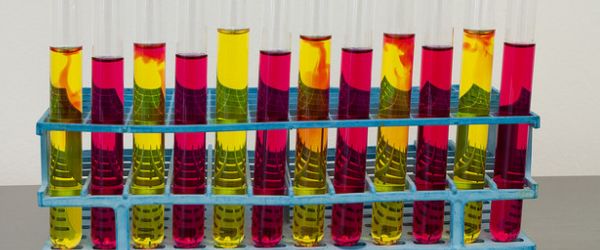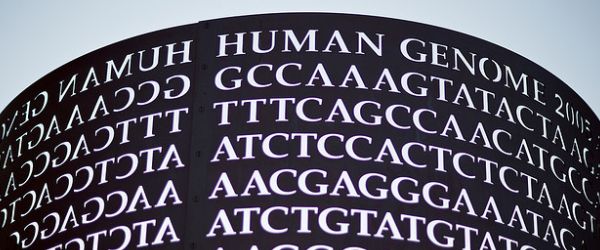One of my favorite things about being a biochemist is to imagine everything at the molecular level—sometimes, in very corny ways.
I envision the proteins I pipet and mix as dynamic characters in a molecular soap opera that intermingle with each other in complex ways. The biomolecular characters in my soap opera interact and react, sometimes with dramatic consequences. Affinities and repulsions are analogous to romance and rivalry. It may seem silly, but thinking critically and carefully about what proteins and other components of a sample are doing in experiments provides me with deeper technical understanding and helps me troubleshoot when things go wrong.
[Cue dramatic music] So you can imagine my surprise when I found out there was another set of characters I hadn’t been including in my soap opera daydreams—the very surfaces and containers I was exposing my samples to!
As it turns out, proteins bind nonspecifically to a variety of surfaces that we use every day, including most plastics, glass, and even metals. This phenomenon—protein adsorption—has unintended consequences ranging from inaccurate protein quantitation at the bench to cross-contamination and immune response on a surgical table. This article provides a brief explanation of why this phenomenon occurs and what you can do about it.
Enjoying this article? Get hard-won lab wisdom like this delivered to your inbox 3x a week.

Join over 65,000 fellow researchers saving time, reducing stress, and seeing their experiments succeed. Unsubscribe anytime.
Next issue goes out tomorrow; don’t miss it.
Why Do Proteins Adsorb to Surfaces?
Proteins are what we call amphiphilic macromolecules- that is, they possess both hydrophobic and hydrophilic groups attracted to nonpolar and polar groups, respectively. In globular proteins, hydrophilic and charged amino acids tend to be located on the exterior of a protein where they are free to interact with water. However, hydrophobic amino acids also exist to some degree on protein surfaces too, providing the basis for hydrophobic protein purification.
It’s these groups that interact electrostatically and often irreversibly with plastics and other surfaces. Thermodynamically speaking, adsorption occurs when the free energy between a protein and a surface is less than that of the surface and water (the bulk solvent). Because plastics and other commonly used materials in the lab tend to have relatively high free energies compared to bulk water, these interfaces are often stabilized by adsorption.*
For example, I work with GFP and unintentionally found out last month that a significant amount adsorbed very strongly to unmodified sepharose that I was using as a negative control in an experiment. Sepharose is a common matrix used to purify proteins, but is usually modified with affinity groups before use. After incubating concentrated GFP with sepharose for less than an hour, I could not remove residual GFP even after dozens of column volumes of buffer and overnight rinsing! Despite being unmodified, sepharose binds to proteins due to its hydrophilic nature (it is a polysaccharide). While most of the GFP I used did flow off the column (unbound), I was quite alarmed to realize that proteins do not elute completely off an FPLC column no matter what I try.

Figure 1. Nonspecific adsorption of GFP to sepharose resin after ~12 column volumes of elution.
Eek! When Would Proteins Adsorbing to Labware Ever be a Good Thing for Scientists?
In fact, there are lots of reasons that nonspecific protein adsorption to surfaces is a good thing.
Take the ever-popular ELISA, which is a robust high-throughput assay that detecta proteins and other biomolecules in samples. The first step in an ELISA is to capture the protein of interest onto the bottom of a 96-well plate. This is due to- you guessed it- our friend, non-specific protein adsorption.** ELISAs would not be the routine and relatively inexpensive experiments they are today if specialized material was needed to bind protein samples in the first place (plastic is cheap compared to other materials used to selectively bind protein).
Another instance in which protein adsorption is a desired characteristic in the lab is on certain chromatographic columns. For instance, ion exchange chromatography is wholly dependent on interactions between the overall charge of proteins and a charged resin. If not for the slight differences between binding affinity to charged resins, biochemists would have greater difficulty purifying proteins. While this process isn’t 100% nonspecific in nature, the accuracy in which a given protein is separated on ion exchange resin is powerful considering that most proteins carry an overall charge of some sort.
And finally, an example of desirable protein adsorption that affects millions of people: biosensing test strips. Blood glucose levels are measured in diabetic patients by test strips with immobilized glucose oxidase, which results in reactions leading to an electric current monitored by a glucometer. Pregnancy tests are made by coating nonwoven fibers with antibodies that ultimately bind the pregnancy hormone hCG. Both blood glucose test strips and pregnancy tests, as well as other test strips, rely on nonspecific protein binding to fibers on the test strips.
But How Can I Decrease Unintended Adsorption?
With all that said, protein adsorption in the lab can be an annoyance and result in inaccurate measurements. There are a few great ways to reduce adsorption at the bench:
- BSA (bovine serum albumin): One of the easiest ways to prevent protein adsorption is to add BSA to solvents or wash plasticware with a BSA solution. BSA coats plastics and glass very well and largely prevents proteins of interest from adsorbing. It won’t interfere with enzymatic reactions and can even stabilize many proteins. In fact, BSA is routinely used in restriction digests for this purpose! However, using BSA doesn’t make much sense in some experiments, such as purification of peptides and proteins.
- Detergents: Another straightforward and inexpensive method to prevent adsorption is to include low concentrations (~0.05%) of nonionic, mild detergents like Tween or Triton. These detergents are excellent choices for decreasing adsorption to hydrophobic polymers like plastics, but do not work well when using hydrophilic materials such as glass.
- Salts: You can increase salt concentration to prevent adsorption, but it is tricky. While salt does disrupt hydrophilic interactions between proteins and a surface, adding too much will disrupt protein structure and eventually ‘salt out’ the protein! Exercise caution.
- Polyethylene glycol (PEG): PEG can be coated onto materials and excludes volume available on surfaces to repel proteins.
- Reducing protein concentration: The higher the bulk concentration of your sample, the greater the amount of protein that gets adsorbed. You can decrease adsorption of the protein by reducing the overall protein concentration. However, this is usually not convenient and significant decreases in protein adsorption can be achieved more easily using the methods described above.
As with all research, the key to understanding and preventing unintended protein adsorption is to keep in mind all of the interactions between characters in a given experiment. If you’re having trouble with proteins adsorbing to labware, consider the options above when troubleshooting!
Are there other methods you’ve used to prevent proteins from sticking to surfaces? Tell me in the comments below!
*This is a very brief explanation of adsorption behavior. For brevity, I have left out much of the thermodynamics and surface chemistry that works behind the scenes. For more details, please visit the references included with this article.↩
**While ELISAs are dependent on target proteins non-specifically binding to a plate, background from other proteins adsorbing to the plate can be an issue in direct capture ELISAs. ↩
Further Reading
- Nakanishi K et al. (2001) On the Adsorption of Proteins on Solid Surfaces, a Common but Very Complicated Phenomenon. Bioscience and Bioengineering. 91(3), 233-244.
- Goebel-Stengel et al. (2011) The importance of using the optimal plastic and glassware in studies involving peptides. Anal Biochem. 414(1), 38-46.
- Home Pregnancy Test.
You made it to the end—nice work! If you’re the kind of scientist who likes figuring things out without wasting half a day on trial and error, you’ll love our newsletter. Get 3 quick reads a week, packed with hard-won lab wisdom. Join FREE here.







